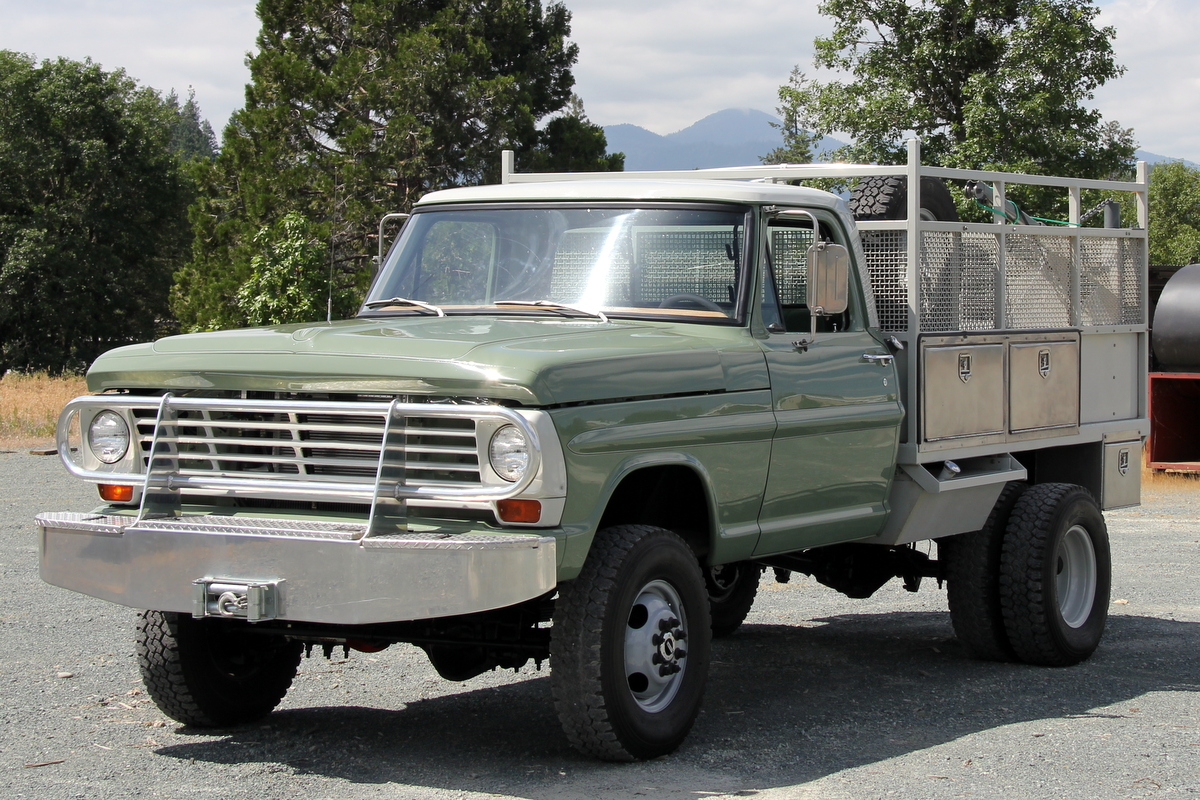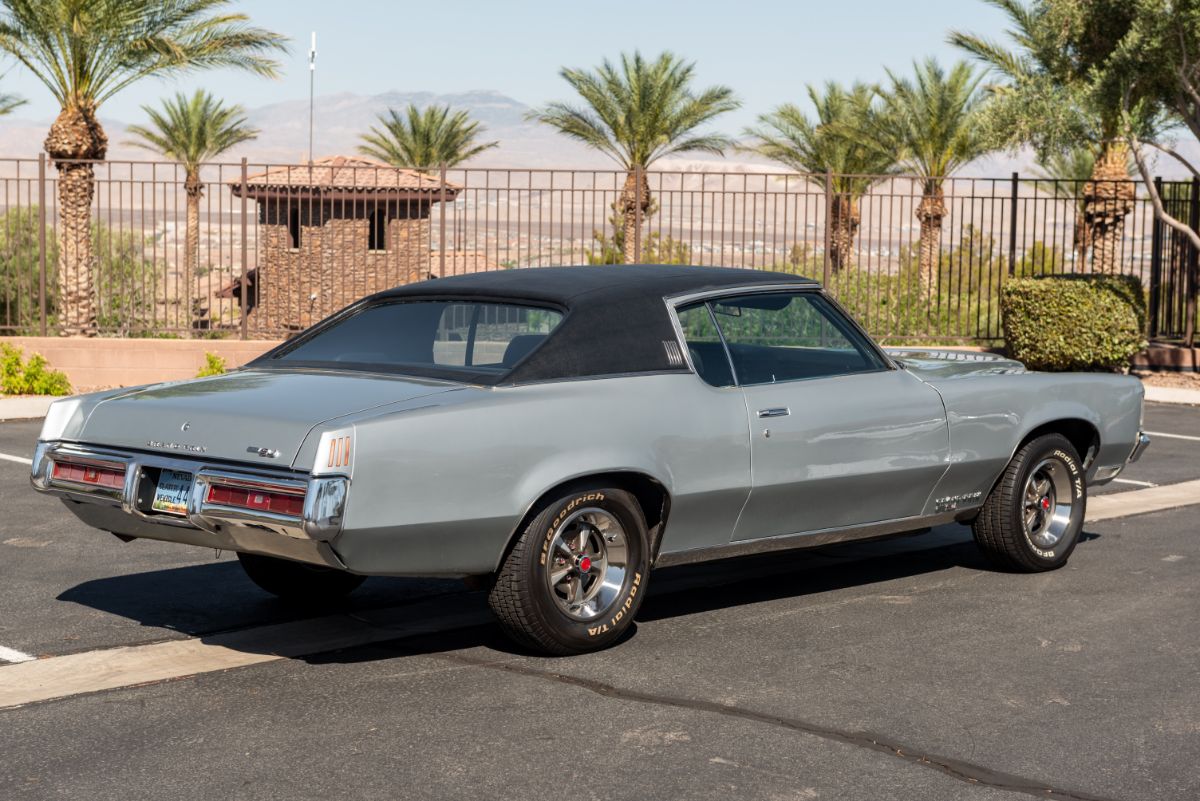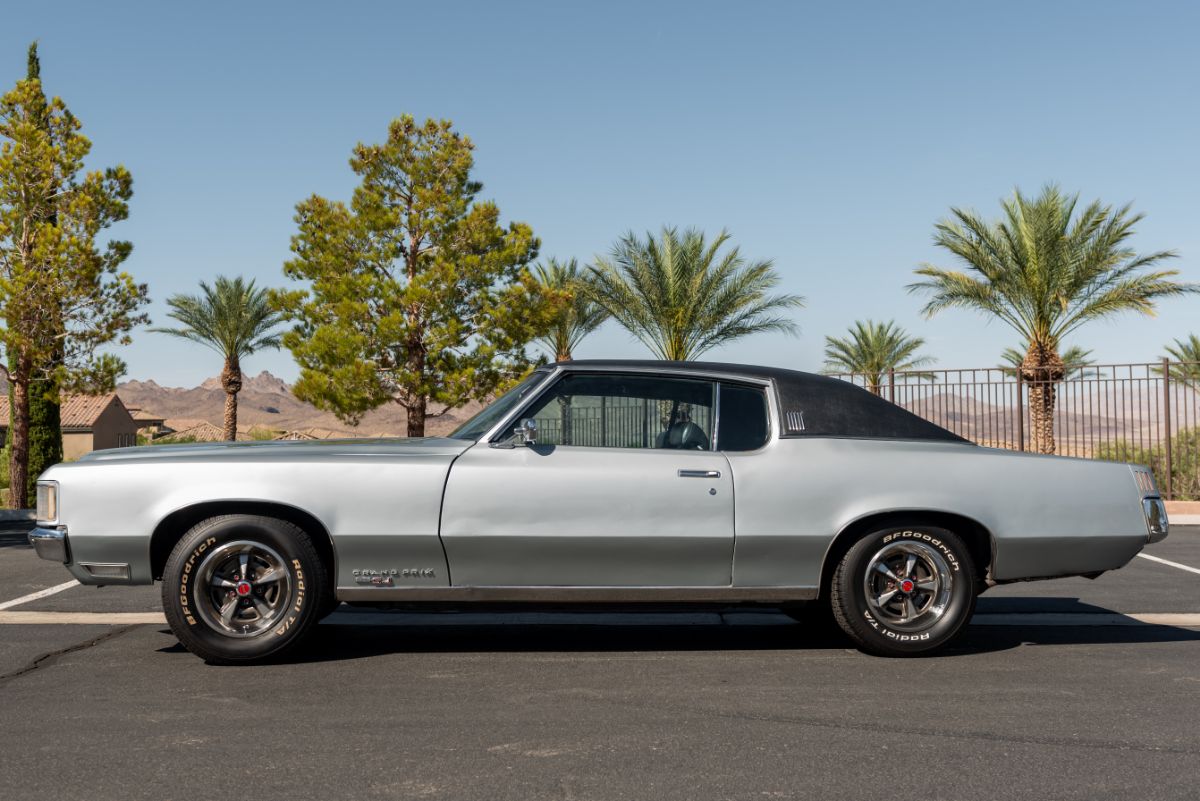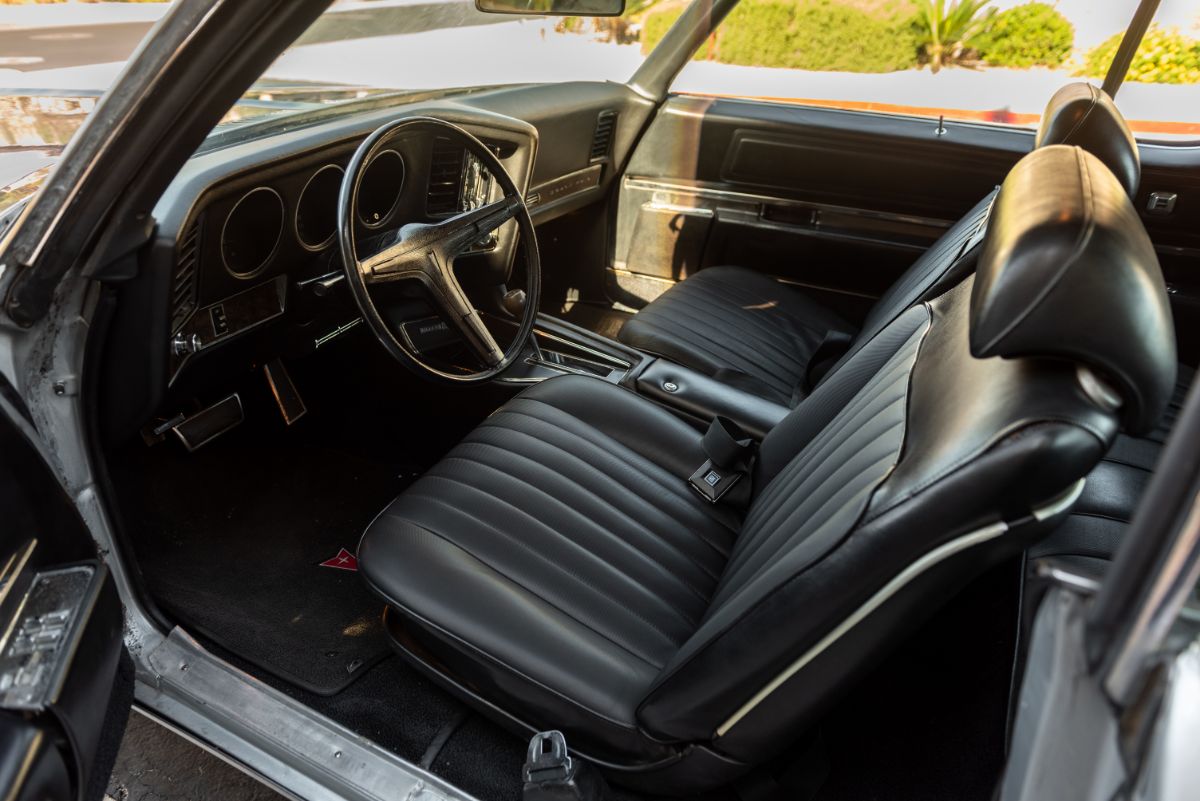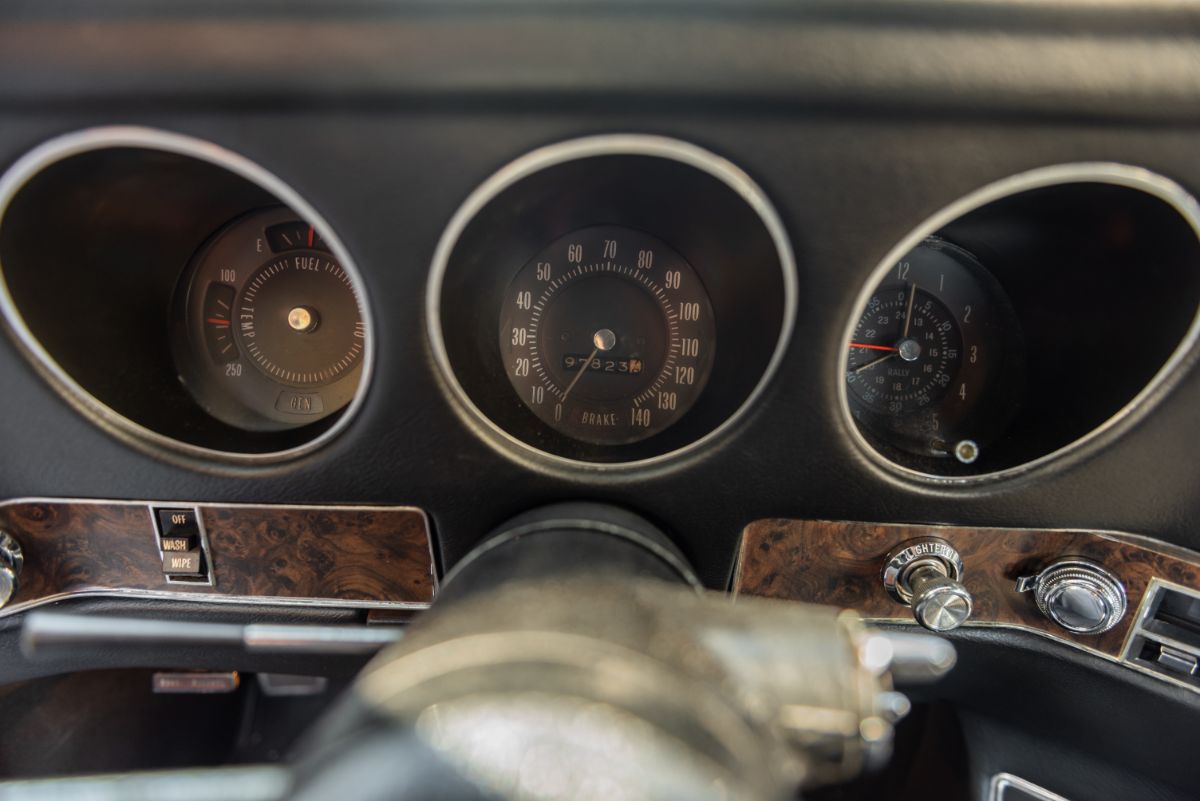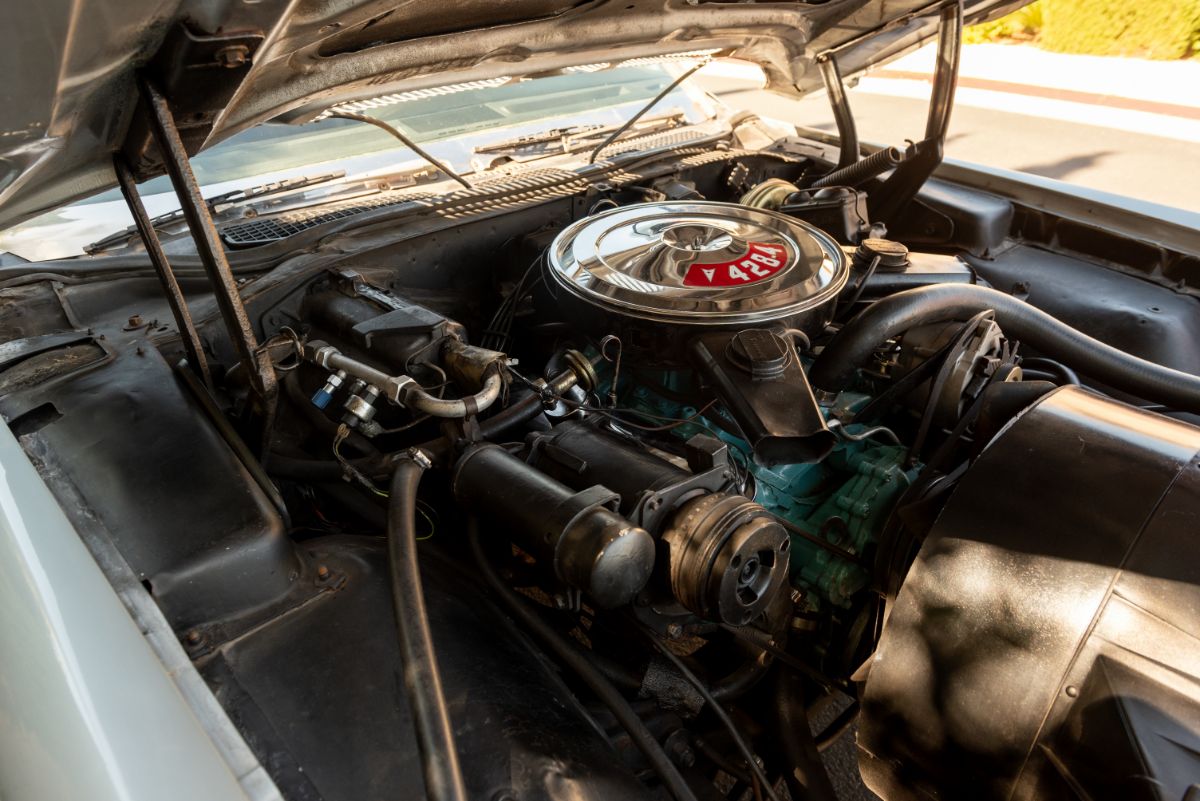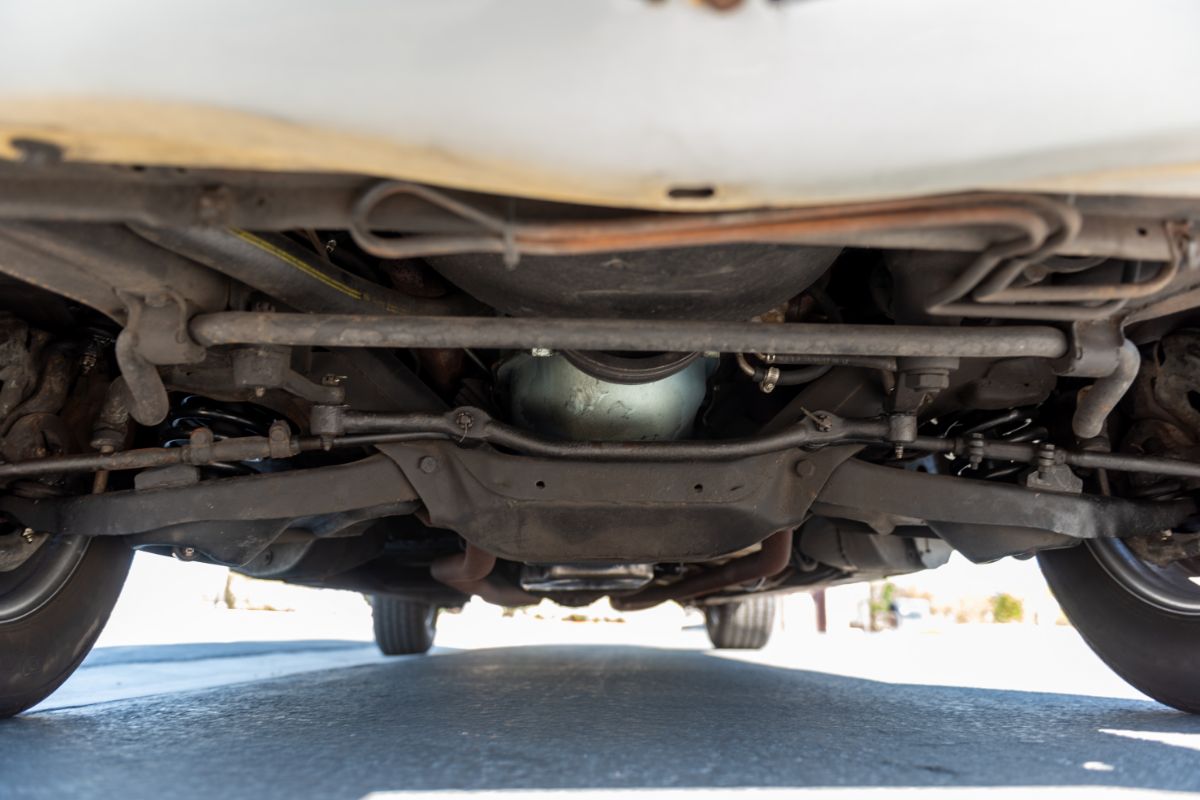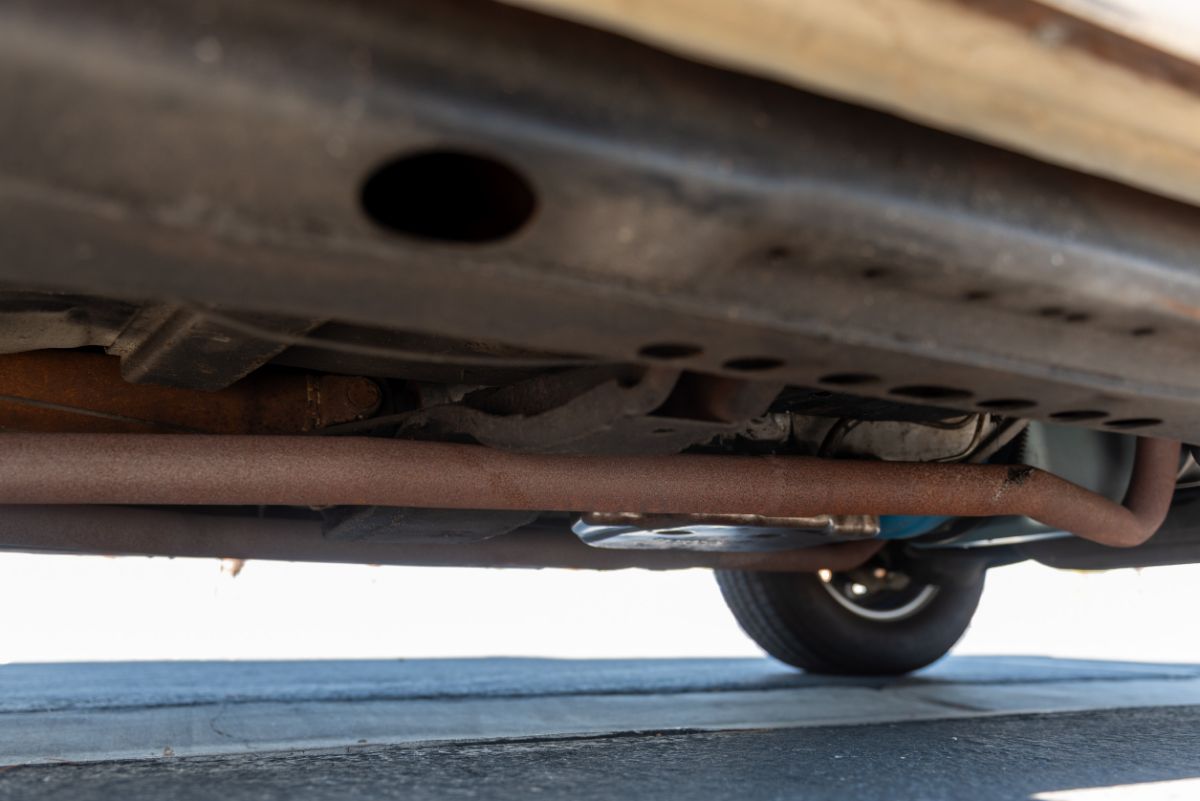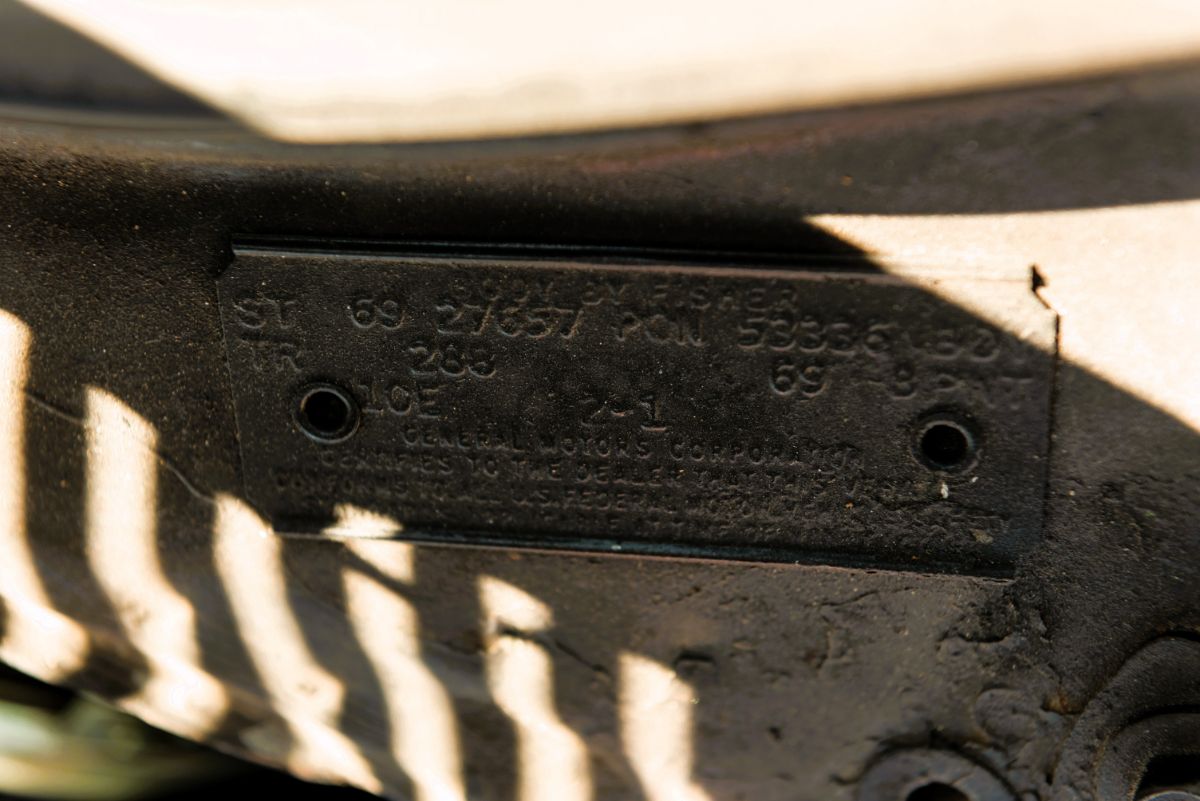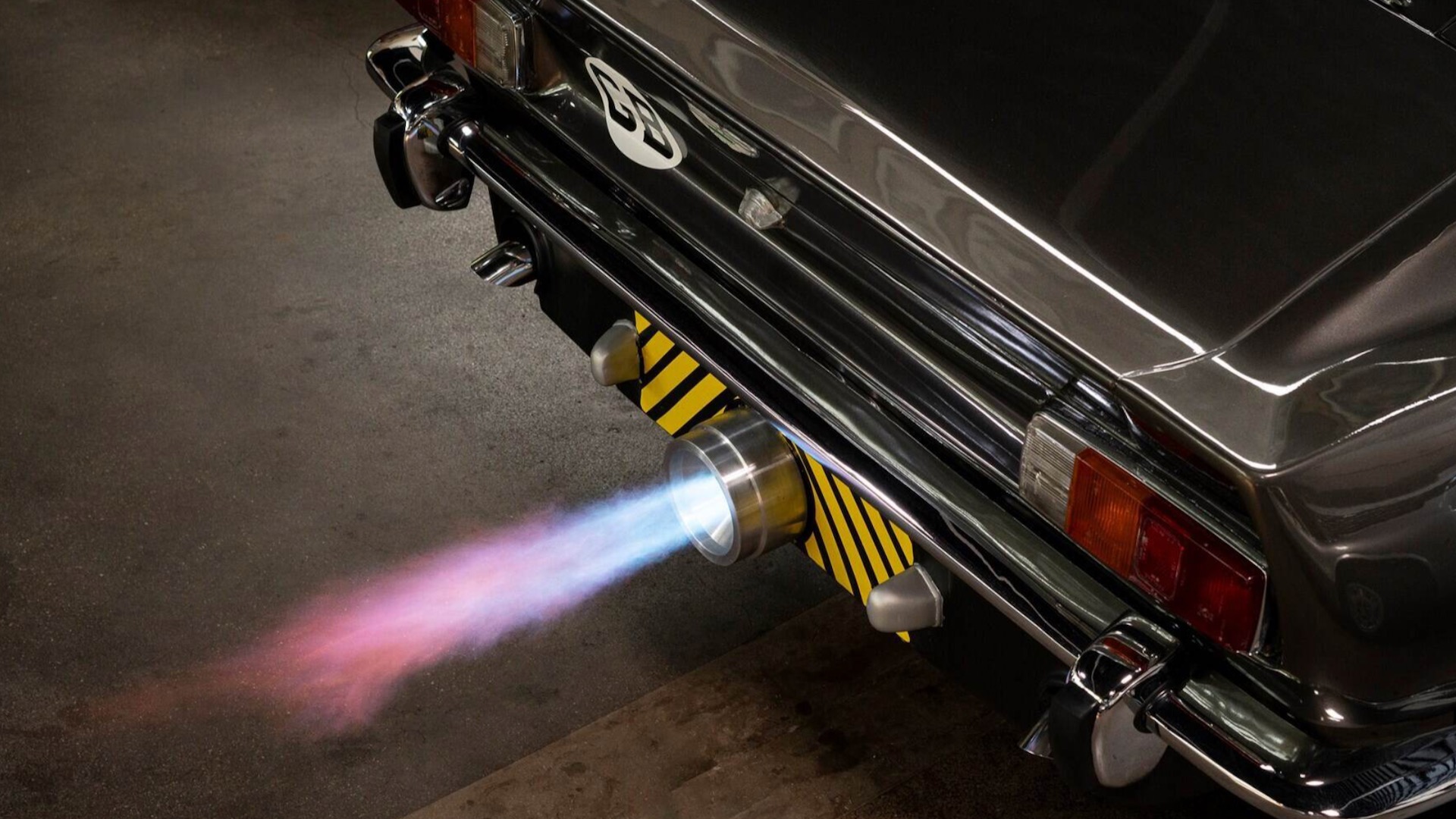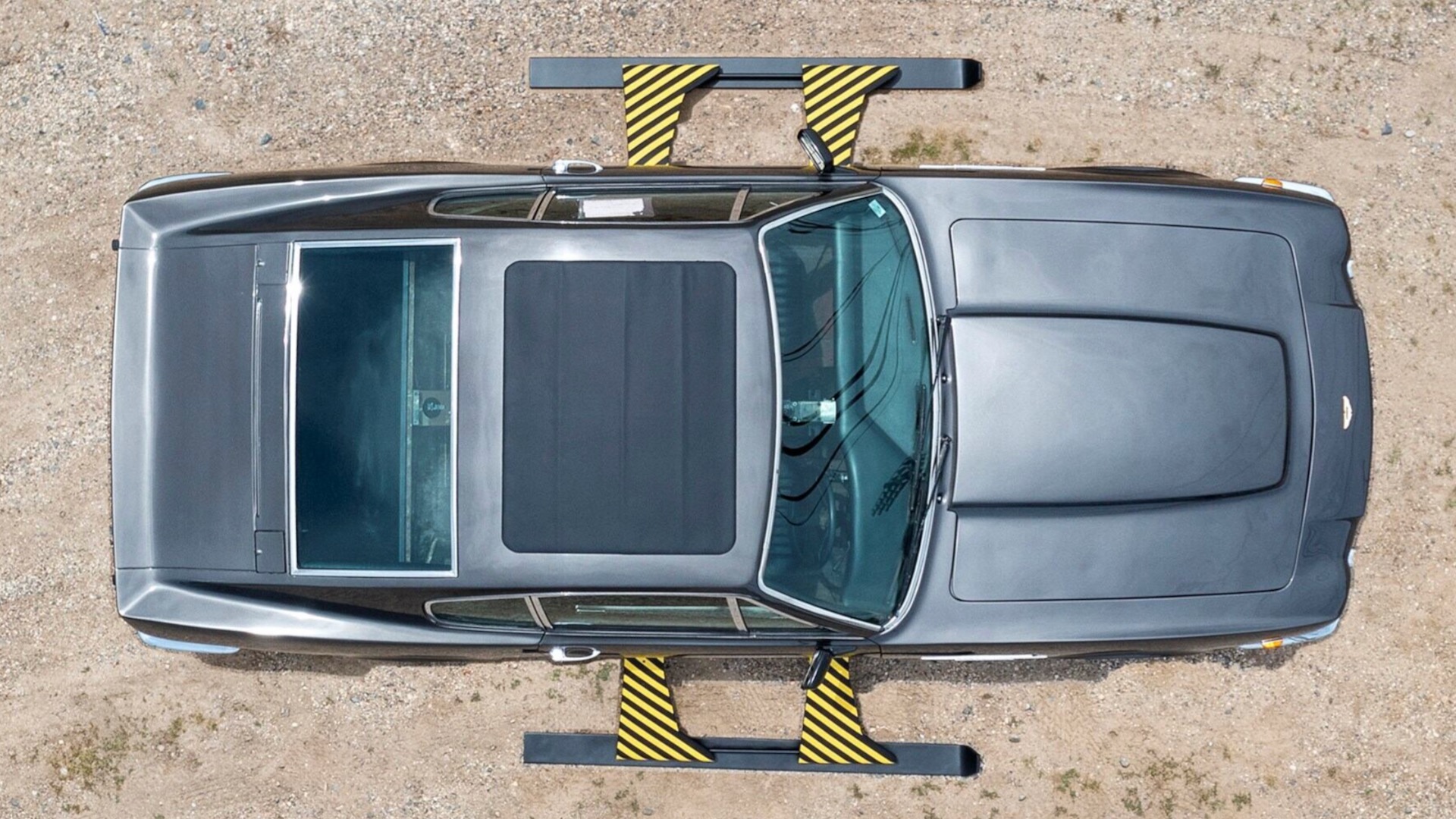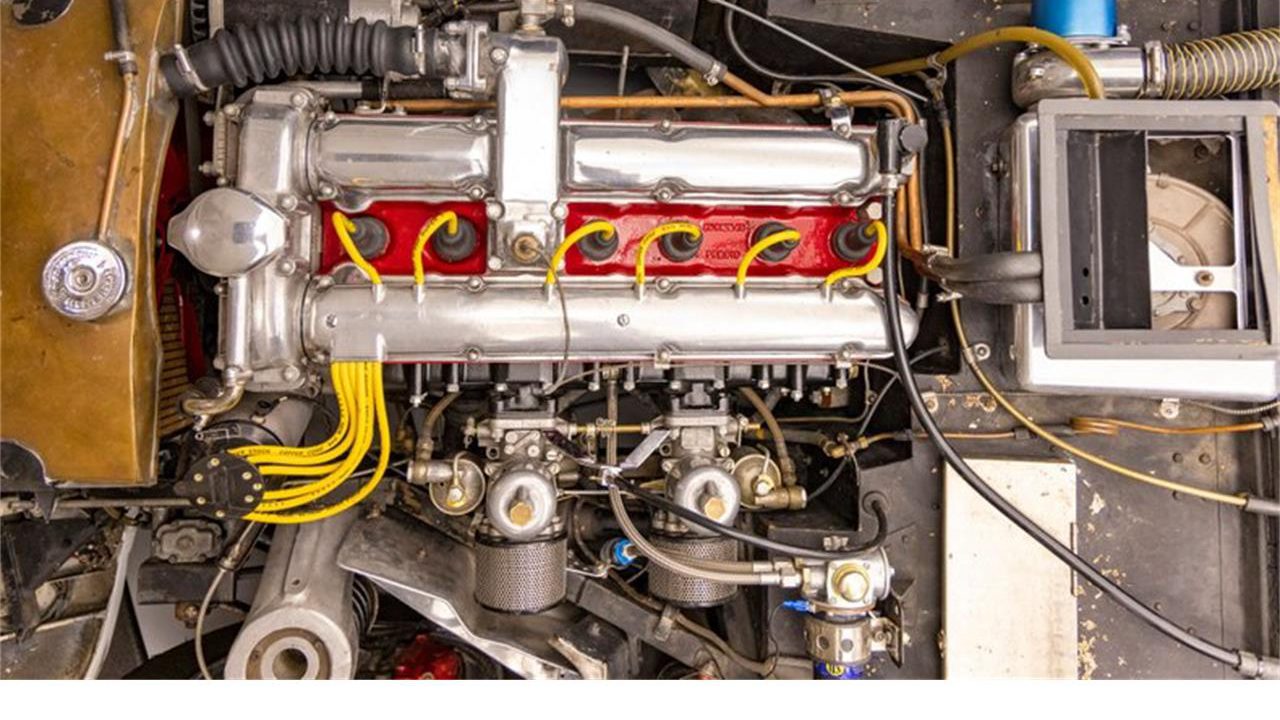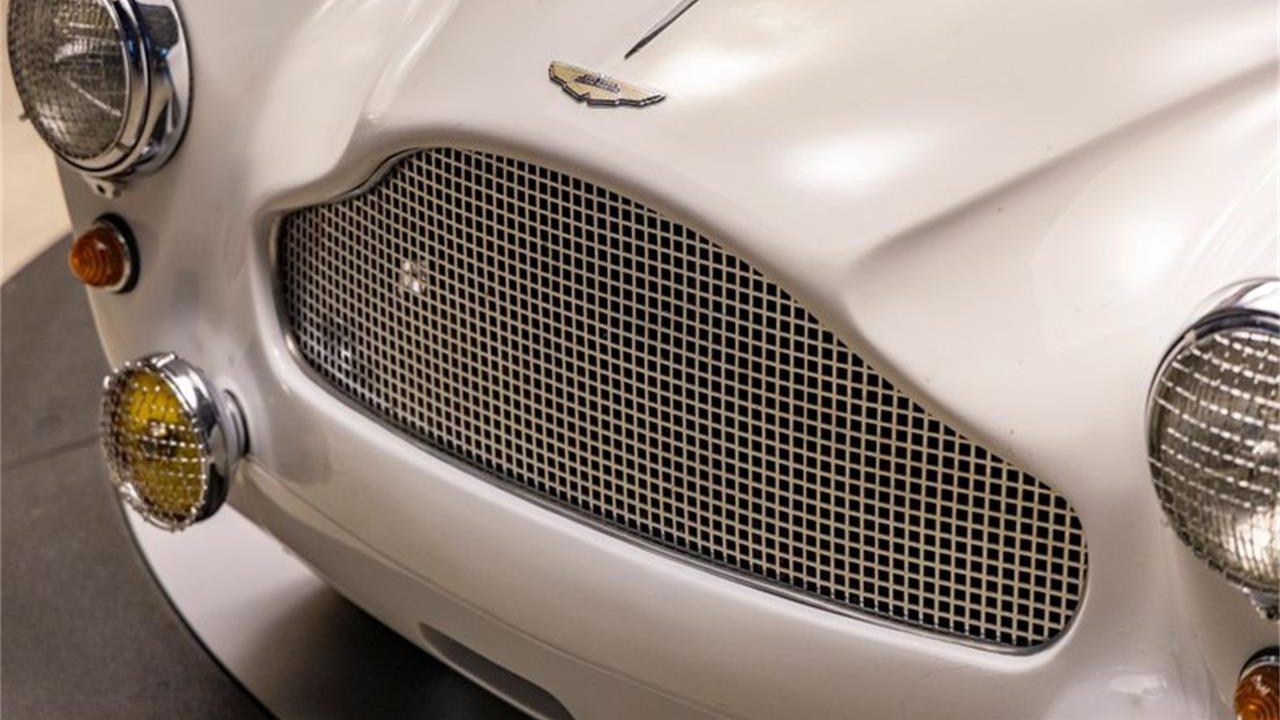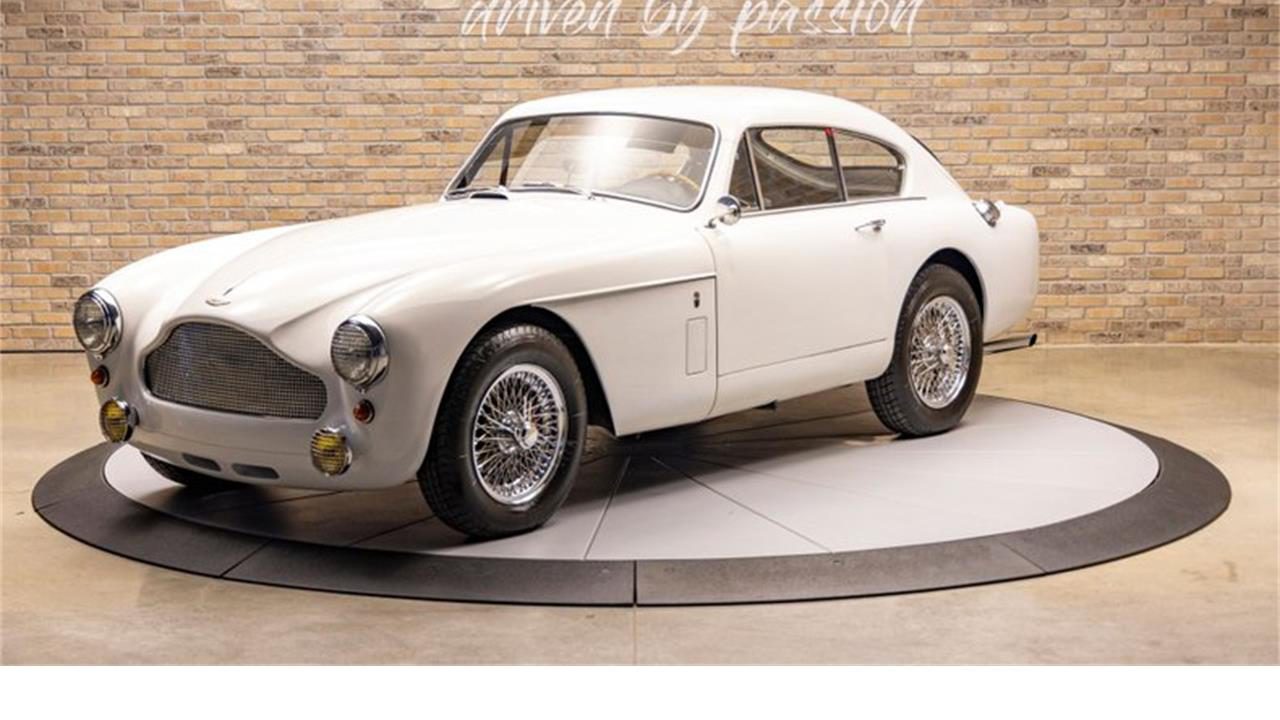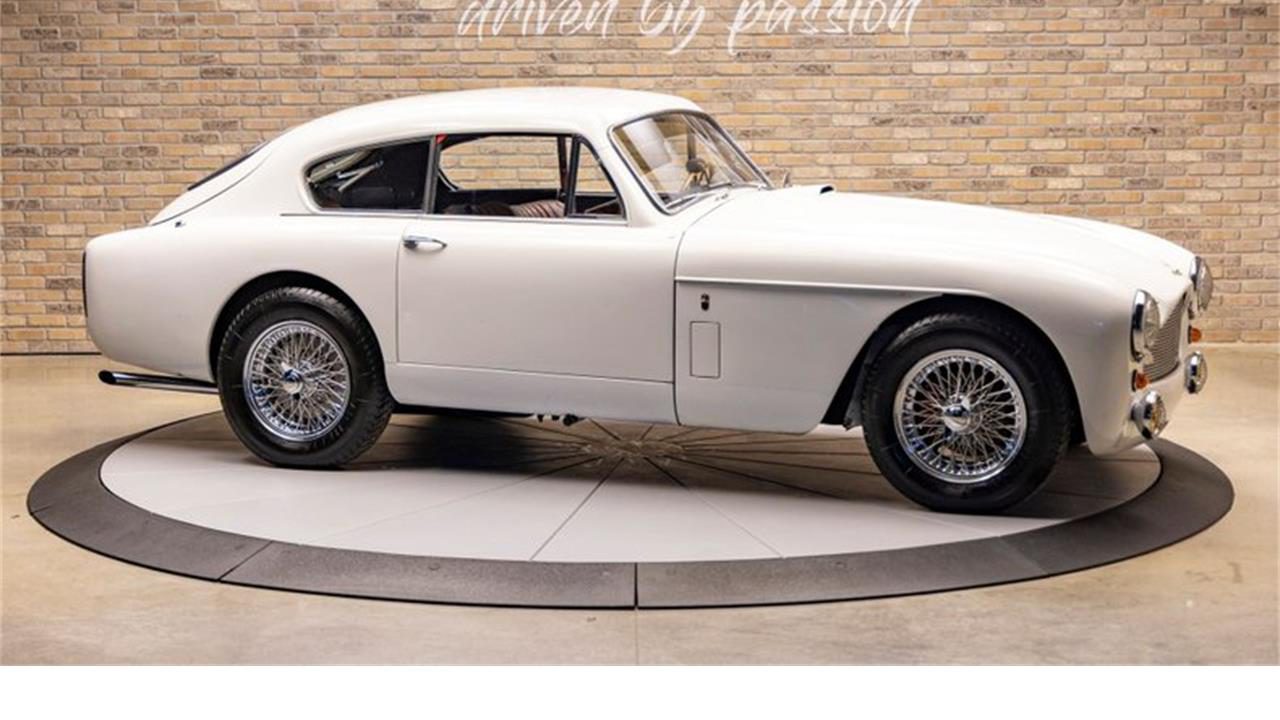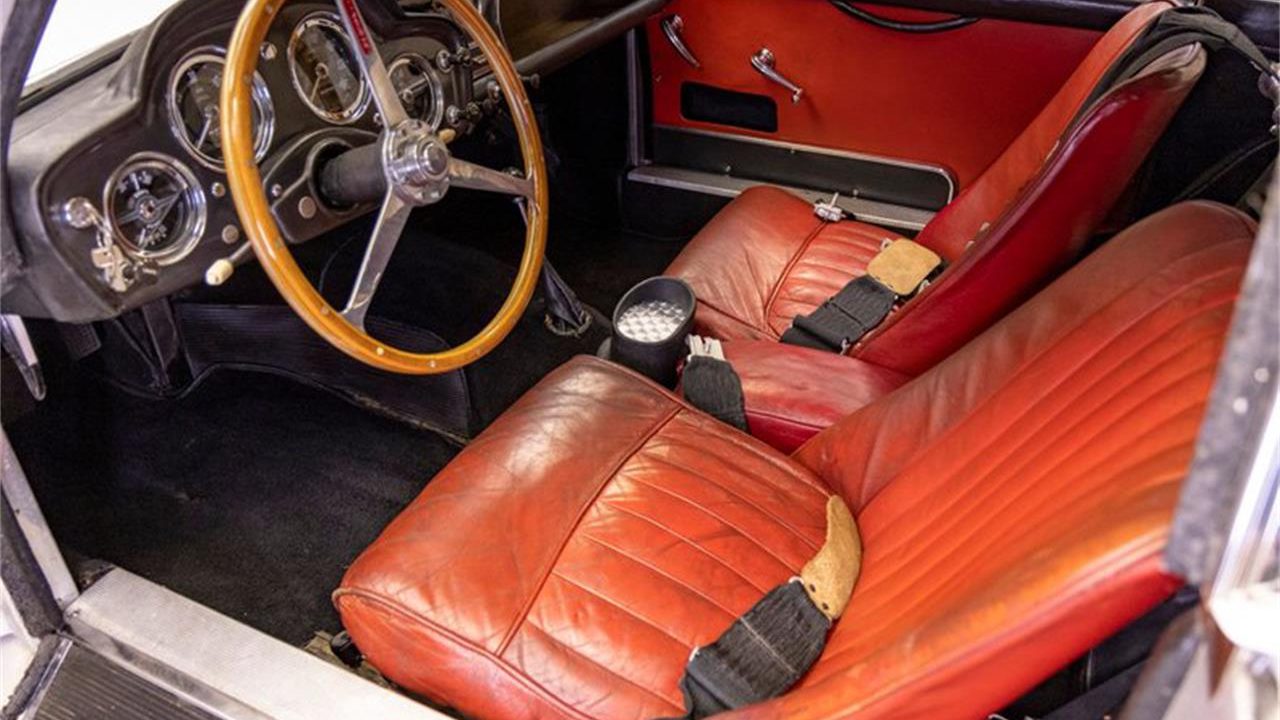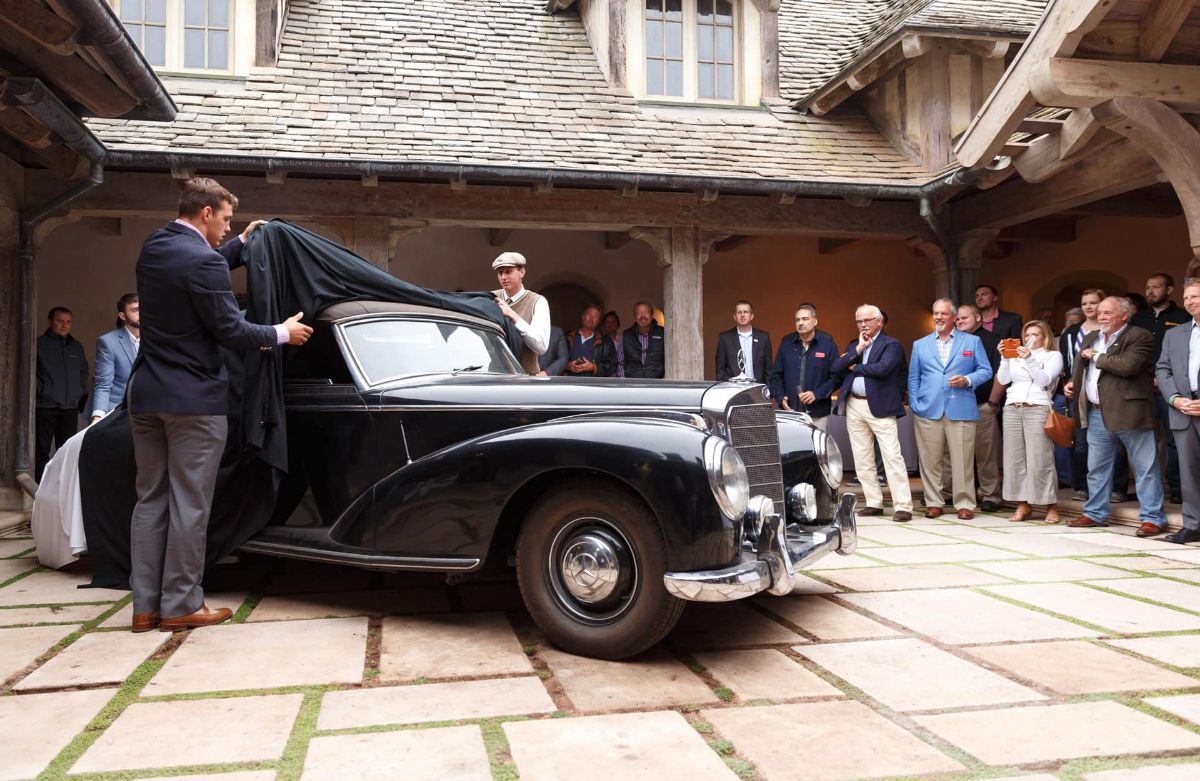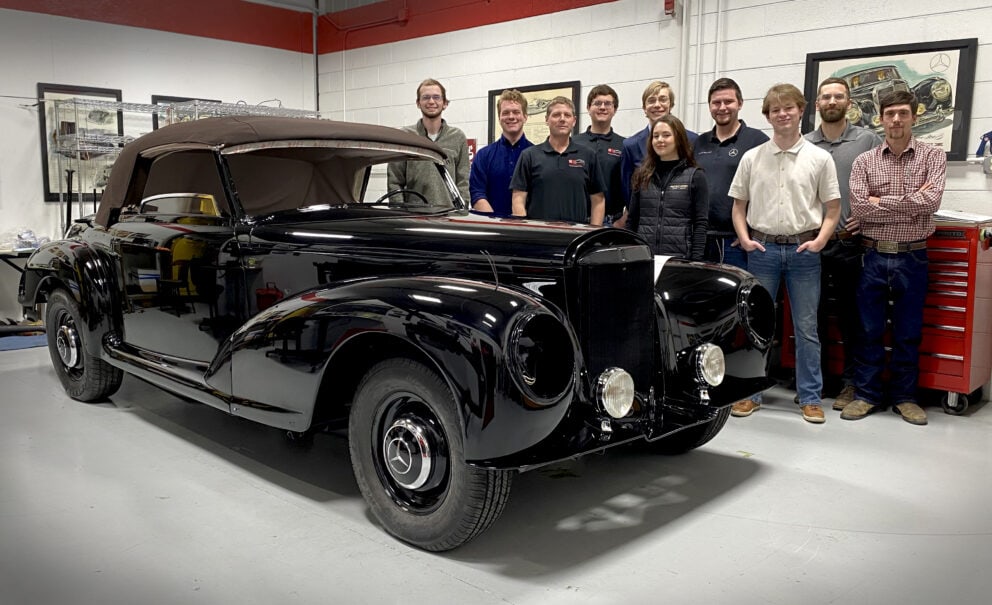This Model T-style roadster was built approximately 15 years ago utilizing a metal body mounted on a custom frame. A 2.8-liter Chevrolet V6 powers rear wheels via a four-speed manual transmission and a solid rear end. The engine features dual carburetors on an Edelbrock manifold, and the car is also equipped with wire wheels, four-wheel drum brakes, and a fuel tank concealed in a piece of faux luggage. It is titled as a 1926 Ford using an Idaho-assigned identification number and was previously owned by the seller more than a dozen years ago before being recently reacquired. This custom roadster is now offered at no reserve with a clean California title in the seller’s name.
The Model T-style metal body is finished in metallic gray and features a windscreen, reverse-hinged doors, LED taillights, and a luggage rack out back that is topped by a leather-covered box containing the fuel tank. Various paint flaws are pointed out in the gallery below.
Beige-finished wire wheels wear chrome center caps and are mounted with Excelsior tires. Braking is via drums at all four corners, and the suspension incorporates transverse leaf springs front and rear.
The cabin houses two seats that are upholstered in black and contrasted by tan door and side panels as well as gray square-weave carpets. The transmission tunnel upholstery shows signs of wear and peeling.
A four-spoke steering wheel sits ahead of a body-color metal dashboard housing a 160-mph speedometer, 8k-rpm tachometer, and auxiliary gauges. The six-digit odometer shows approximately 200 miles, around 100 of which have been added by the seller.
The 2.8-liter Chevrolet V6 is topped by an Edelbrock intake manifold, a Speedway manifold adapter, and two Stromberg-style carburetors. An aluminum radiator is also installed, and the oil was last changed around 100 miles ago.
Power is sent to the rear wheels via a four-speed manual transmission with a cable-operated clutch, and the solid rear end is said to feature a modified Toyota differential. Additional underbody images are provided in the gallery below.
The car is titled in California using the Idaho-assigned identification number shown above.
